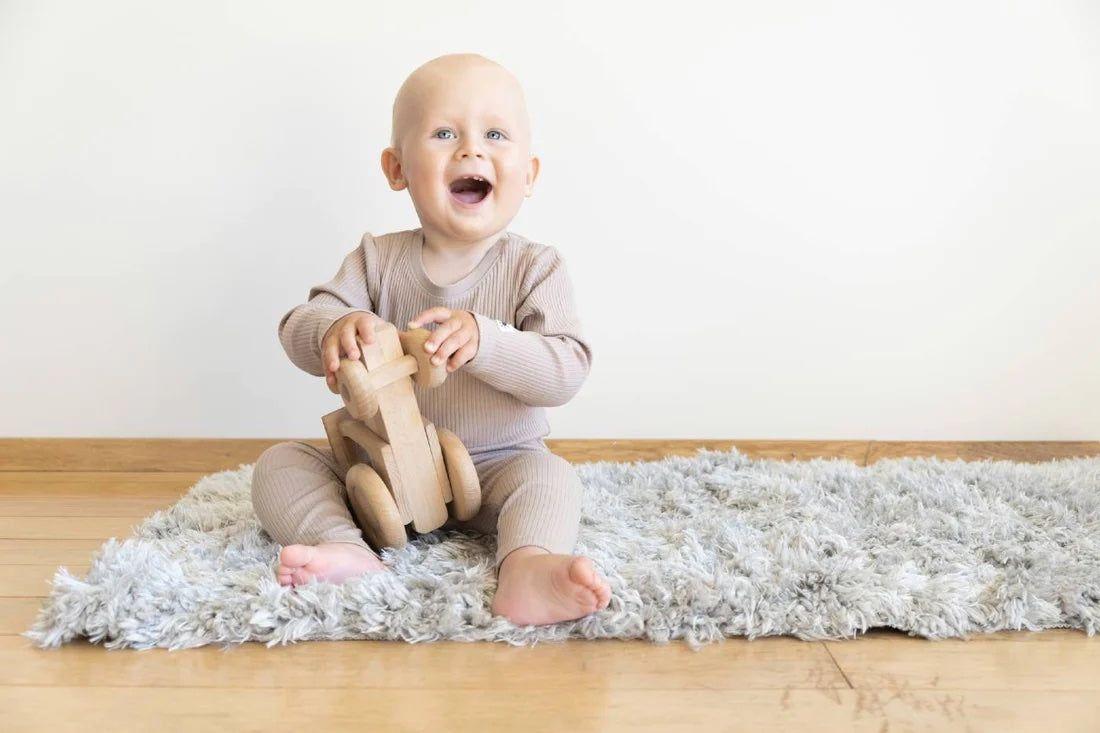TODDLER
How to Choose the Safest Toys for Your Tot
When you’re making a list and checking it twice, be sure toy safety is a top priority.

Written by
Happiest Baby Staff

SHARE THIS ARTICLE
PARENT PICKS
Bestsellers
TODDLER

Written by
Happiest Baby Staff

SHARE THIS ARTICLE
Bestsellers
Blocks, puzzles, ride-on dump trucks, bouncy balls, dollies…toys are fun! And they’re an integral part of a child’s development. Kids need play, just like plants need water and sunshine! But at times, toys can prove to be dangerous. Here, everything you need to know about making sure babies and big kids have oodles of fun playing with their toys—safely!
Age requirements on toys are not merely nice suggestion. Instead, they're there to ensure your child’s toys are developmentally appropriate for their age (buying toys geared toward older kiddos leads to frustration) and safe. That means, for instance, toys labeled for children under 18 months will be void of dangerous strings, straps, or cords longer than twelve inches.
Got a baby under a year old? There should be no (as in zero) soft objects in their sleep space, which includes cot gyms and stuffed toys. Any toy or objects that may increase your little one’s risk of entrapment, suffocation, or strangulation should be kept out of the cot. As far as baby mobiles go, those are safe…as long as they are out of your baby’s reach and removed from their sleep space once your baby is either 5 months old or begins to push up on their hands and knees.
A 2021 report in the journal Environment International finds that a quarter of all children’s toys contain harmful chemicals. Yikes! But since most plastic toys aren’t labeled with the chemicals they contain, it makes picking the safest toy trickier. To help, here are some general safe-shopping guidelines that’ll help you select toys that are made with the safest materials.
Following age requirements for your child’s toys will sidestep many choking risks. But it’s important to do more than that. Here are some smart rules to follow to avoid toys that are choking hazards:
Buying safe toys is one thing. Ensuring the toys remain safe is another! To do just that, follow this stay-safe advice:
It can be very tempting to buy this season’s hottest, hard-to-get toy from a rando online retailer or from a third-party seller, but if the deal and your luck seems too good to be true, it probably is. While your bub might not know the difference between the real deal or a copycat toy, here’s why you should care: Legitimate toys must comply with safety standards in order to make it to retailers. But counterfeit or knock-off toys are very unlikely to comply with strict toy safety laws. In fact, a 2022 report from the British Toy & Hobby Association found that nearly half of toys bought from third-party sellers were unsafe. To help ensure you’re getting a legit toy…
The Office for Product Safety and Standards (OPSS) has lots of rules and guidelines to ensure toys are safe. So, if a toy is suddenly found to be unsafe, OPSS issues a recall to make sure those dangerous toys come off the store shelves. To be on top of the latest recalls, you can view recent toy recalls at the Child Accident Prevention Trust website. And if a toy in your possession has been recalled, it should be discarded right away.
Disclaimer: The information on our site is NOT medical advice for any specific person or condition. It is only meant as general information. If you have any medical questions and concerns about your child or yourself, please contact your health provider. Breastmilk is the best source of nutrition for babies. It is important that, in preparation for and during breastfeeding, mothers eat a healthy, balanced diet. Combined breast- and bottle-feeding in the first weeks of life may reduce the supply of a mother's breastmilk and reversing the decision not to breastfeed is difficult. If you do decide to use infant formula, you should follow instructions carefully.